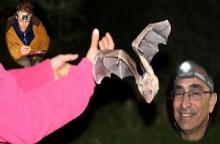- About us
- Research
- Students & Teaching
- Seminars & Events
- Directories
- Booking Rooms & Equipment
- עברית
Home » Prof Ran Nathan revealed cognitive map–based navigation in wild bats
The presence of a cognitive map is essential to our ability to navigate through areas we know because it facilitates the use of spatial knowledge to derive new routes. Whether such maps exist in nonhuman animals has been debated, largely because of the difficulty of demonstrating qualifying components of the map outside of a laboratory.
Using a novel system capable of tracking dozens of animals simultaneously at high accuracy and resolution, we assembled a large dataset of 172 foraging Egyptian fruit bats comprising >18 million localizations collected over 3449 bat-nights across 4 years. Detailed track analysis, combined with translocation experiments and exhaustive mapping of fruit trees, revealed that wild bats seldom exhibit random search but instead repeatedly forage in goal-directed, long, and straight flights that include frequent shortcuts. Alternative, non–map-based strategies were ruled out by simulations, time-lag embedding, and other trajectory analyses. Our results are consistent with expectations from cognitive map–like navigation and support previous neurobiological evidence from captive bats.
